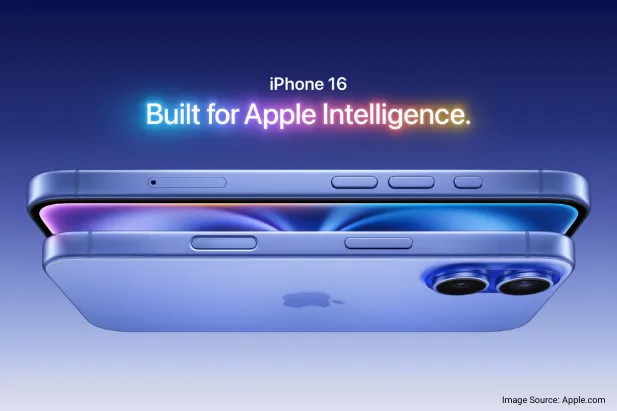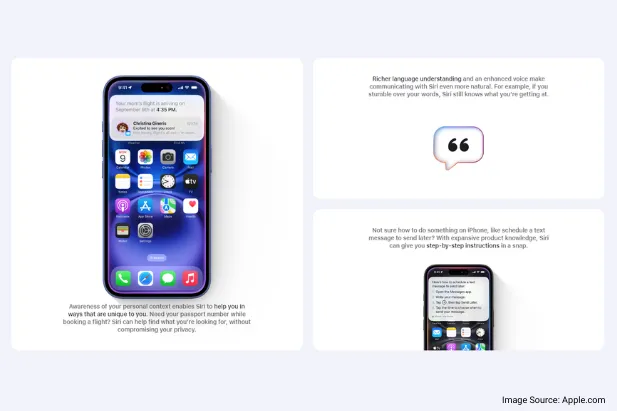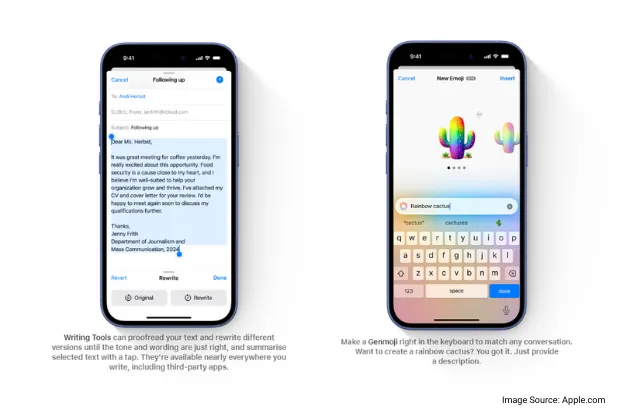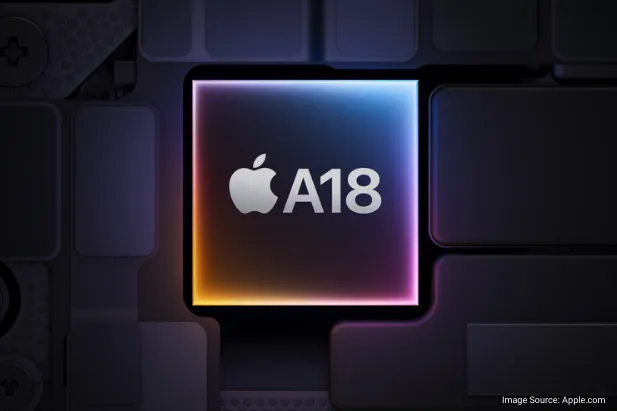
AI-Powered iPhone 16: A Deep Dive Into Apple's Smartest Phone Yet
Apple has once again pushed the boundaries of smartphone technology with the introduction of the iPhone 16 series. These devices are not just about sleek design or better cameras but about the significant integration of artificial intelligence (AI), known as Apple Intelligence.
This AI platform powers many new features, from smarter Siri interactions to enhanced photo editing and browsing experiences.
But how exactly does AI make the iPhone 16 series stand out? Let’s dive into the details.
Apple’s AI Vision with iPhone 16
With Apple Intelligence, the company has woven AI into the core of how users interact with their devices. This isn’t about adding a few fancy features; it's about making everyday tasks smarter and more seamless. Apple's AI strategy revolves around three key pillars:
- Enhancement of User Experience: Making the phone feel more responsive and personal.
- On-Device Processing: Prioritizing privacy by keeping most AI processing on the device rather than in the cloud.
- Seamless Ecosystem: Integrating AI capabilities into Apple’s wider ecosystem (like Mac, iPad, and Watch) for a cohesive experience.
By focusing on these areas, Apple ensures that its AI not only feels cutting-edge but also secure and intuitive.
Key AI Features in the iPhone 16
Let’s break down some of the key AI-driven features of the iPhone 16 and explore how they enhance everyday use.

1. Siri’s AI Evolution
- Contextual Understanding: Ask Siri, "When is my flight?" and it will automatically check your messages, emails, or apps for the relevant details.
- Text Interaction: Instead of always relying on voice, you can now type questions to Siri, offering flexibility in quiet environments.
Example: If you’ve planned a meeting but forgot the details, you can simply ask Siri, “What time is my lunch with Sarah?” Siri will extract the relevant info from your calendar or messages.

2. AI-Enhanced Camera System
The AI-enhanced camera is a game-changer for photography enthusiasts. Here’s how AI impacts the camera experience:
|
Feature |
How AI Improves It |
|
Object Recognition |
AI identifies objects in the frame and adjusts settings for the perfect shot. |
|
Real-Time Scene Optimization |
Adjusts lighting, focus, and exposure in real time based on the environment. |
|
Smart Suggestions |
Suggests the best angles and filters for better composition. |
Example: When taking a picture of a sunset, AI recognizes the scene and adjusts the exposure and colors to ensure the sky looks vibrant without overexposing the rest of the image.

3. AI in Text and Image Creation
- Genmoji: Create custom emojis using AI by simply typing a prompt. For example, “a dancing dog” can be turned into a unique emoji.
- Text Summarization: AI can summarize long email threads or messages, making it easy to catch up on important points. This feature works well when you’re bombarded with lengthy discussions.
Example: If you’re catching up on a 20-message thread in your inbox, AI will highlight the main points and provide a summary at the top.
4. AI-Driven Safari and Web Features
Apple’s Safari browser also benefits from AI enhancements:
- Intelligent Search: AI highlights key points or phrases on a web page, allowing users to get to the most important content faster.
- Web Eraser Tool: Remove unwanted web elements, such as ads, for a cleaner, more focused browsing experience.
Comparison of Browser Features:
|
Feature |
Traditional Browsers |
AI-Driven Safari |
|
Ad Blocking |
Requires third-party extensions |
Built-in Web Eraser removes ads automatically |
|
Search Functionality |
Basic keyword search |
AI highlights key phrases and summarizes content |
|
Personalized Recommendations |
None |
AI learns browsing habits to offer smarter recommendations |
Apple Intelligence vs. Competitors
In the smartphone market, AI is becoming the defining feature. Here’s how Apple stacks up against its competitors:
|
Feature |
Apple iPhone 16 |
Google Pixel |
Huawei Mate |
|
AI Camera |
Real-time optimization, Smart Suggestions |
Advanced post-processing with AI features |
High AI integration for object detection |
|
AI-Powered Assistant |
Siri with contextual awareness |
Google Assistant with deep AI integration |
AI-powered assistant, but less focus on privacy |
|
Privacy Focus |
On-device AI processing |
Mostly cloud-based processing |
Some on-device processing but heavy reliance on cloud |
Why Apple Stands Out: Unlike Google or Huawei, Apple emphasizes on-device AI processing, prioritizing user privacy. With less data being sent to the cloud, Apple positions itself as the more secure and privacy-conscious option.
How AI Enhances Everyday User Experience
AI doesn’t just power fancy features—it enhances how the iPhone fits into users' daily lives:
- Personalization: Your iPhone adapts to your habits, offering shortcuts based on routines or adjusting screen brightness based on preferences.
- Accessibility: AI helps users with disabilities by providing real-time voice recognition, describing images for the visually impaired, and more.
- Multitasking Efficiency: AI manages background apps intelligently, conserving battery life and improving overall device performance.
Example: If you always order coffee at 8 AM, AI might suggest adding a shortcut to order from your favorite café automatically.

The A18 and A18 Pro Chips: AI at the Core
The powerhouse behind Apple’s new AI features is the A18 and A18 Pro chips. Here’s why they’re special:
- AI Processing: These chips are optimized for handling AI tasks, from real-time photo adjustments to predictive text.
- Energy Efficiency: AI algorithms help manage power more effectively, ensuring longer battery life.
- Advanced Gaming and AR: The chips use machine learning to predict in-game movements and enhance augmented reality (AR) experiences.
Comparison of Chip Performance:
|
Feature |
A18 Chip |
Previous A17 Chip |
|
AI Task Efficiency |
50% faster |
Slower, more battery-intensive |
|
Energy Management |
Smarter AI-based battery optimization |
Standard power management |
|
AR and Gaming Performance |
Optimized for real-time predictions |
Lacks advanced machine learning |
Conclusion
Apple’s integration of AI into the iPhone 16 series isn’t just about adding new features—it’s about making the device smarter and more useful in everyday situations. Apple Intelligence enhances everything from photos to personal assistant tasks, making the phone feel more like a personalized, intelligent companion. As AI continues to evolve, Apple’s focus on privacy, efficiency, and personalization sets it apart from competitors, ensuring that the iPhone remains at the forefront of smartphone innovation.
FAQs
How does AI in the iPhone 16 improve battery life?
AI helps manage power consumption by analyzing app usage patterns and reducing the load on the battery during multitasking or background processes.
Can AI features in iPhone 16 be customized or turned off?
Yes, users can customize or disable many AI-driven features through settings, giving control over how much AI integration they want.
What makes Apple Intelligence different from Google’s AI?
Apple prioritizes on-device processing for most AI tasks, which enhances user privacy, while Google relies more heavily on cloud-based processing.
How does AI improve the camera experience in iPhone 16?
AI helps by optimizing scenes, recognizing objects, and making real-time adjustments to ensure the best shot without manual intervention.
Does AI in the iPhone 16 compromise privacy?
No, Apple’s AI processes most data on the device itself, minimizing the need to send personal information to the cloud, thus maintaining user privacy.

 Prasanth Parameswaran
Prasanth Parameswaran
